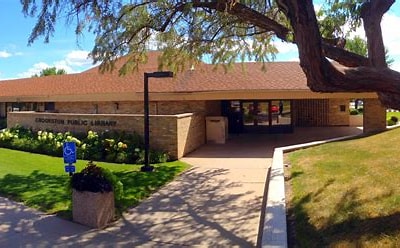Members of the Polk County Board of Commissioners (PCC), Grand Forks County Board of Commissioners (GFCC), East Grand Forks City Council, Grand Forks City Council, the staff of each agency, and residents attended a one-hour presentation Tuesday afternoon focusing on the Merrifield Bridge crossing option. Grand Forks – East Grand Forks Metropolitan Planning Organization (MPO) Executive Director Earl Haugen presented the data focusing on Merrifield Bridge connecting Polk County Road 58 and Grand Forks County Road 6. Merrifield is one option for two possible bridges between the communities of Grand Forks and East Grand Forks.
The MPO has identified the need for two bridges to relieve traffic congestion on the three current bridges (Point, Kennedy, Sorlie) by 2045. Both both the PCC and the GFCC having passed resolutions in support of the Merrifield bridge. During the meeting, the question was asked if talking about the Merrifield bridge was expressing a priority in that option over the options within city limits. Both Warren Strandell, PCC Chair, and David Engen, GFCC Chair, expressed both counties had passed resolutions in support of Merrifield specifically. Engen said at least in his case he felt a bridge within the city limits of both cities was more of a city-level discussion.
Haugen also said there was a need to relieve traffic on all three bridges and the meeting was about how the Merrifield Bridge could benefit the Kennedy and Sorlie bridges. “We need to relieve all three bridges,” said Haugen. “The Point Bridge would benefit the most from a bridge at between 32nd, Elks or 17th Ave. But we also have the Kennedy Bridge and Sorlie Bridge. The Merrifield Bridge provides relief to those as you heard the agricultural movements that are at peak periods in the spring and fall that impact traffic through Grand Forks and East Grand Forks. The Merrifield location benefits those two existing bridges enough plus attracts that farm traffic away. So that the downtown environment benefits that it does have enough of a positive benefit-cost ratio to want to pursue it as a structure.”
According to Haugen additional bridges have been discussed since 1969. And despite the changes over time in proposed locations, the need, as well as the price, continues to rise. In a 2004 feasibility study of a Merrifield Bridge, the cost was estimated at $14.5 million, the most recent cost estimate is at $31.1 million. But Haugen said the benefit-cost analysis still shows that for every $1 spent, the benefit will be between $2.20-$2.40. That is determined using several factors, including travel time, miles, safety, and air quality explained Haugen. “The benefit from the required methodology of doing a benefit-cost analysis are on travel times savings and travel miles savings,” said Haugen. “There is a way you calculate out a safety benefit, and there is also a calculate for air quality improvement by having fewer hours and miles traveled.”
Haugen also stated that the focus of the study completed by the MPO was primarily on local traffic, and one such reason was to compare the bridges similarly. The local traffic study estimates in 2045 that 3,600 vehicles will cross the Merrifield Bridge every day. He also added that after the bridge was to be in place, it is likely interchanges, and connections for regional traffic would follow increasing the benefit of the bridge. “We modeled all five river crossing without connections to the regional network,” said Haugen. “So, without an interchange at I-29, without a more direct connection to U.S. [Highway] 2. We did that to keep all the river crossings the same so that they could be compared similarly for their benefit to the local traffic. We found that Merrifield didn’t relieve much on the Point Bridge. Point Bridge is our biggest concern, but we saw that Merrifield still had a great benefit-cost ratio. We know once the bridge is in place, there is a likelihood of an interchange being put in place adding regional traffic to the benefit of the Merrifield crossing. So, our numbers will improve and only get stronger in the support and need for the structure.”
Haugen ended his presentation expressing his interest in seeing the support of both counties in moving the bridge to the next stage. The next step would likely be moving into environmental assessments paid for by the two counties. Grand Forks County Highway Engineer Nick West estimated it would cost $500,000. To which he added that while he supports the bridge, he’s not currently sure of how that money would be made available.





